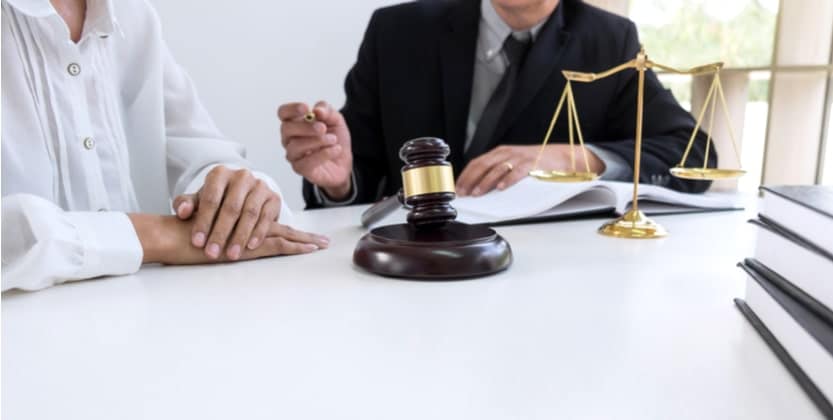Receiving compensation after an accident hinges on establishing who was at fault for the damages. This is the case for all personal injury accidents, whether they be slip and falls, bicycle accidents, or car crashes. However, plenty of accidents are not one-sided events.
Sometimes both parties are partially at fault for an accident. In these cases, many individuals fear that they won't be able to recover their damages because they were partially responsible. But, the state of Florida operates under the statute of pure comparative negligence, meaning that your level of negligence is not a barrier to receive compensation for your injuries, even if you were mostly at fault for them.

What is Pure Comparative Fault?
Florida's comparative negligence statute, also referred to as comparative fault law, allows the blame for an accident to be apportioned to more than one party. Under this rule, both parties retain their rights to pursuing damages. However, if a party is found to have contributed to the accident or the damages, they cannot recover full compensation for their losses. Instead, they can only recover a percentage.
This percentage is determined by first establishing what percentage of fault each party is responsible for. According to Florida law, "contributory fault chargeable to the claimant diminishes proportionately the amount awarded as economic and non-economic damages for an injury attributable to the claimant's contributory fault.” Essentially, this means that when a party is partially responsible for an accident, their recovery will be reduced by their percentage of fault.
Pure Comparative Fault in Auto Accidents
The easiest way to understand pure comparative fault is by example. Say that you were side swiped by a driver incorrectly switching lanes. The police at the scene would likely cite the other driver for the accident, and a court would be likely to support that opinion, potentially ruling that the driver's negligence led to the accident.
However, if you were speeding at the time of the accident, your injuries were likely worse than they might have been if you were following the enforced speed limit. Therefore, a jury may determine that by speeding, you doubled the severity of your injuries. In this case, they may assign you 50 percent of the fault. If your damages equaled $100,000, you would only be able to collect 50 percent, or $50,000, from the other driver or their insurance company.
Pure Comparative Fault Applies to All Accidents
Pure comparative fault would hold true for a scenario such as a slip and fall accident as well. Say, for example, you were going down a flight of stairs holding your coat. But, the riser height of each step was different. A jury would likely find that the varying riser height contributed to the accident, and that the property owner was negligent for failing to correct the issue.
However, if your coat was dangling in front of you and you tripped over it, losing your balance, a jury may determine that your own actions also contributed to the accident. This is another case in which you could be assigned a percentage of the fault, limiting what you could collect in damages. If you were deemed 40 percent at fault, and the property owner 60 percent at fault, you could only collect 60 percent of your total damages as opposed to the entire sum.
Equating Fault with Liability in Florida
The pure comparative fault statute, F.S. §768.81, is meant to fairly attribute payment for damages in proportion to the percentage of fault by which the individual contributed to the accident. According to the Florida Bar, "[t]here is nothing inherently fair about a defendant who is 10 [percent] at fault paying 100 [percent] of the loss.” However, this was not always the case.
Until 40 years ago, liability and fault were linked in ways that led to unjust outcomes. Prior to operating under pure comparative negligence, the state of Florida operated under "contributory negligence." This old statute left a victim barred from all recovery, even if they were found to be just 1 percent at fault for the accident. In 1973, the Florida Supreme Court began equating fault with liability by adopting the statute of comparative negligence.
How Do I Know My Percentage of Fault?
If you feel partially responsible for an accident, you can be uncertain of how you should seek compensation. At the time of an accident, a police report is filed stating the circumstances of the accident. Often local police issue citations to one or more of the parties involved in the accident, based on the officer's interpretation of fault. During this time, you may or may not have received a citation.
However, once the accident has been reported to the insurance company, the insurance company of each party will do individual investigations into the case to determine which party was at fault. Once each insurance company begins to investigate the accident, they may come to their own decisions about how fault was divided. But, it is important to remember that insurance companies will make decisions with their own best interests in mind. Therefore, it is crucial to receive an unbiased opinion on your fault.
In this case, you should always consult with a personal injury attorney. With help from a trusted attorney, you may pursue financial settlement from the other party's insurance company. In fact, an attorney can negotiate with the insurance company's lawyers to decide on a fair apportion of fault, so that you can avoid going to court for a ruling.
Contact a Trusted Attorney Today
If you were partially at fault for an accident, that does not mean that you cannot seek compensation. At the Weinstein Legal Team, our dedicated attorneys will fight for your right to recover damages.
Accidents happen, and nobody is perfect. But, if you suffered injuries due to an accident with another individual, you deserve to seek compensation. Contact the Weinstein Legal Team today for a free consultation, or fill out our free and confidential case evaluation form for an expert opinion today.


